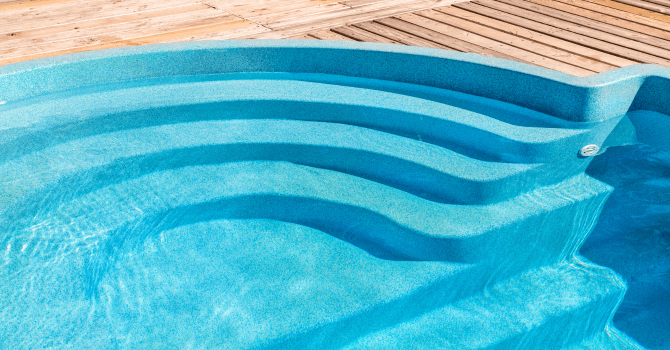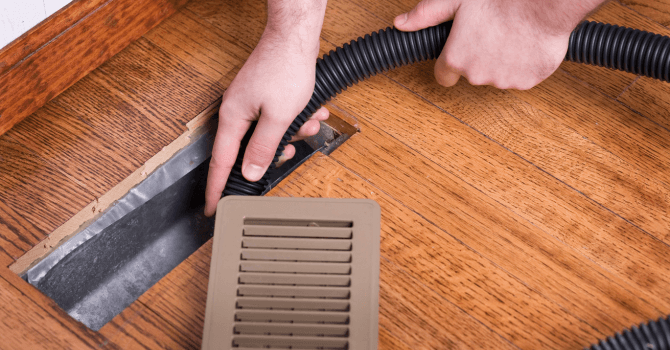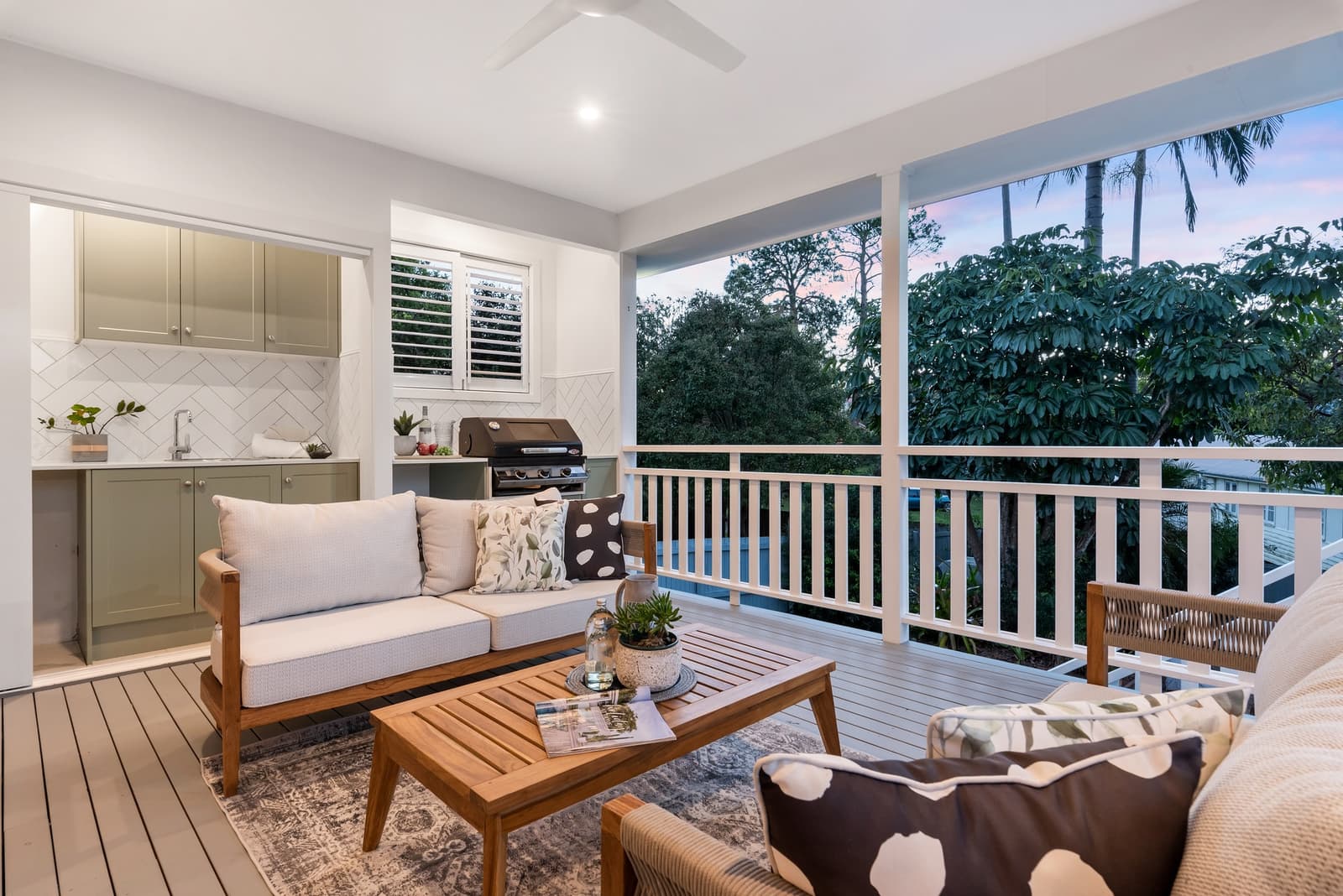Our Expert Tips and Advice for a Successful Fibreglass Pool Installation
By Editorial Team
Updated on July 9, 2025

Dreaming of moments of relaxation and swimming? Installing a fibreglass pool means choosing thermal comfort, minimal maintenance, and exceptional durability.
Want to learn more about the simple steps to follow for installation? This article offers all our tips and tricks for a successful fibreglass inground pool installation.
Tips for Installing and Building a Fibreglass Pool
Fibreglass pools fall under the category of inground pools. The shell is made from fibreglass-reinforced materials. Although this type of pool is known for its high quality—especially due to its resistance to ground shifts—it’s still essential to follow some key advice to avoid any issues during the process.
Tip 1: Choose a Concrete Pool Surround
Why concrete? Because fibreglass pools are durable, and concrete is equally long-lasting. To enhance the look of your pool’s perimeter, consider installing concrete pavers. They offer both visual appeal and added safety around swimming pools.
This is also the ideal time to rethink your landscaping while planning the installation.
Tip 2: Plan for the Equipment Pad Location
Two key factors should be considered when choosing where to place the equipment pad:
Noise
Circuit length
The technical area includes noisy components like the pump and filtration system, so avoid placing it near a bedroom window.
Also, keep your PVC pipe circuit under 45 feet. A longer circuit leads to greater pressure loss, which means you’ll need a larger, more energy-consuming pump.
Tip 3: Keep the Pool Far Enough from the House
We recommend placing your fibreglass inground pool at least 10 feet away from the house. A pool installed too close to the home can destabilize the ground, putting your foundation at risk.
Tip 4: Secure the Pool
Each year, many people drown in residential pools. To prevent accidents and ensure your swimming pool is safe, follow your province’s pool safety regulations—this includes fencing, gates, and covers.
Tip 5: Customize the Design
One of the advantages of choosing a fibreglass pool is the option to customize the design. While manufacturers use moulds to shape the shells, you can still personalize your layout.
Some celebrities have done just that:
Michael Jordan installed an island in the middle of his pool.
Selena Gomez chose a lagoon-style design.
Bill Gates even installed an underwater sound system.
Just be sure to account for how much space remains around the pool.
Tip 6: Maintain Access to the Yard
It’s great to have a pool in your backyard—but not if it blocks access to the rest of the site. Before digging the hole for the pool, make sure all necessary equipment is considered and that you’re not cutting off access to your backyard.
You don’t want to be forced to walk through the living room every time you want to go around the house.
Tip 7: Never Drain the Pool Completely
A fibreglass pool shell is designed to support the weight of water. Its structure remains stable when full. So, if you must drain the pool, don’t leave it empty for more than three days.
Pool manuals will emphasize that:
The pool must remain full at all times.
Any partial drainage should be handled by a professional installer.
Routine maintenance does not require draining.
Even for winterizing, do not empty the pool entirely, or you risk damaging the shell permanently.
How to Install a Fibreglass Inground Pool
A fibreglass pool shell is made from polyester and fibreglass. Once the hole for the pool is dug, the shell can be placed. But it’s critical that the hole is properly prepared. It should allow the shell to settle evenly, without resistance and without the risk of collapse.
This is especially important if the hole is too deep and you’re tempted to add loose soil. That loose fill can settle, causing the shell to shift. Instead, use a compacted, stabilized backfill to support the base properly.
How to Prepare the Ground for Pool Installation
Before preparing the ground, start by assessing the soil. A fibreglass inground pool must rest on soil with the following characteristics:
Stability
Uniformity
Cohesion
Load-bearing capacity
No standing water
A soil survey will determine the appropriate backfill. Drainage must also be installed to prevent water pockets from forming under or around the pool.
Once you’ve selected the location, use ground markings to indicate the pool’s position and zero point. This reference point, determined using a transit level or water level, is key to establishing the pool’s level—especially on sloped terrain.
How much does it cost to install an inground fibreglass swimming pool?
The cost of a fibreglass pool depends mainly on two factors:
Size
Shape
Entry-level fibreglass shells start around $9,000. From there, costs will increase depending on your desired shape and size.
You’ll also need to budget for excavation, hauling away debris, backfilling, and filling the pool, which typically ranges from $5,000 to $11,000.
Finishing costs vary widely depending on materials used (concrete, composite, or wood) and fencing type (aluminium, glass, or steel).
Add to that the cost of maintenance, which ranges from $1,000 annually with solar heating to $5,000 with gas heating.
In total, excluding finishes, a fibreglass pool typically costs between $15,000 and $25,000 in the first year, then $1,000 to $5,000 per year thereafter.
FAQ
Installing coping around a fibreglass swimming pool: how is it done?
To install coping around a fibreglass pool, first prepare the surface around the shell. Choose the type of coping (straight, right angle, curved), then glue or fasten the pieces according to the manufacturer’s instructions. The method is similar to vinyl swimming pools: ensure the surface is clean, apply the appropriate adhesive, and carefully adjust the angles as needed.
What are the pros and cons of a semi-inground pool?
Advantages:
Blends well with a backyard's landscaping
Less expensive than a full inground pool
Suitable for all types of terrain, even sloped or uneven
More durable and easier to maintain than above-ground swimming pools
Elevated height makes it more difficult for children or pets to access
Disadvantages:
Installation is more complex and time-consuming than an above-ground pool
Often requires a permit
Cannot be dismantled or moved
Above-ground sections (such as wood panels) require regular maintenance
Looking for something else?
Related articles
The latest industry news, interviews, technologies, and resources.

Editorial Team
•15 Apr 2024
Are you second-guessing the quality of the air you’re breathing in but have no idea how to fix the situation? Rest assured, this article details everything you should know about cleaning your home’s ventilation ducts.

Editorial Team
•20 Jul 2024
Composite wood is a great material to consider for building an outdoor structure. It’s a fair alternative to natural wood given its optimized composition designed to withstand the ever-changing weather conditions.

Léa Plourde-Archer
•07 Nov 2023
Need help identifying a load-bearing wall? Here are a few tips to follow to see if such is the case:

Editorial Team
•07 Nov 2023
Summer might be over, but that doesn’t mean all dreams of being whisked away seaside have to fade. What if we told you that travelling to a coastal haven with sandy beaches was a possibility without having to leave your cozy pad?

Editorial Team
•14 May 2025
What are the factors that influence the cost of finishing a basement? What steps should be considered to determine an accurate budget? In this article, we detail the various stages and factors that affect the final cost, from material choices to the complexity of the necessary work.